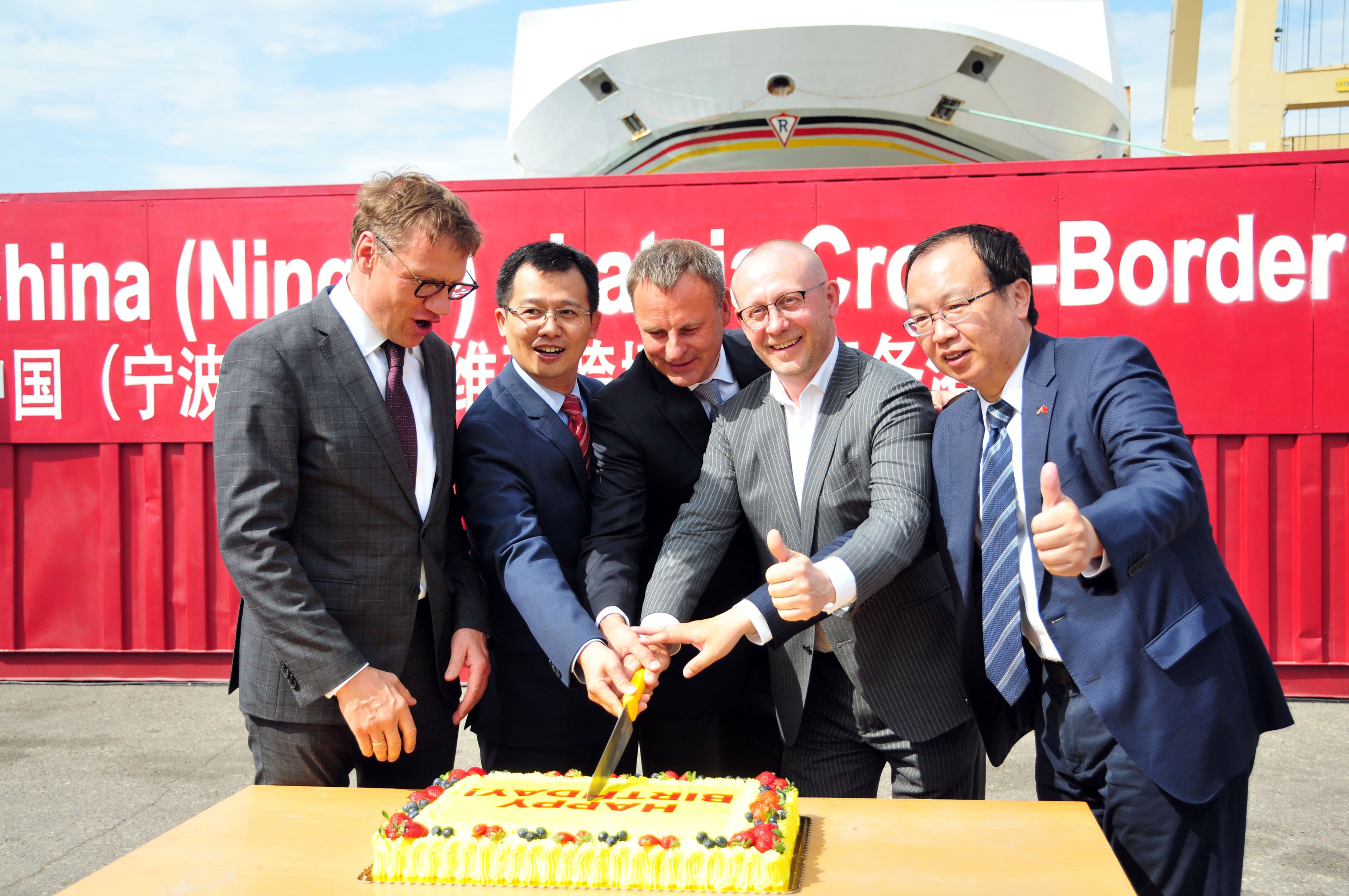Prospects for Cooperation between the Baltic States and China

Baltic States’ Relations with China
Over the past decade, China has become an increasingly important economic partner to the Baltic States. First, the international financial crisis of 2007–2009 and the collapse in the euro area led to drastic falls in GDP, especially in Latvia (down 18% in constant prices). As a result, the Baltic States, seeking to diversify trade, began to open to non-European markets. Then, their trade with Russia, one of their main partners, was limited after its aggression against Ukraine in 2014 and the EU sanctions that followed (in 2015, Lithuanian exports to Russia decreased by over 40%, the most in the small country’s modern history).
Lithuania, Latvia, and Estonia, even though relatively small countries, support multilateral cooperation formats with China. They are involved in the “17+1” initiative (formerly “16+1”), which is a format allowing them also to revive bilateral political relations with China, even so far as to host the format’s 2016 summit in Riga. During the summit, the head of the Chinese government, Li Keqiang, travelled to Latvia as the first Chinese state representative to visit the country since it regained independence. The visit included bilateral meetings with the Prime Minister of Latvia Māris Kučinskis and President Raimonds Vējonis. In 2018, bilateral talks at the highest level, between President Vējonis and Chinese President Xi Jinping, took place in Tianjin during the World Economic Forum, and presidents Kersti Kaljulaid of Estonia and Dalia Grybauskaitė of Lithuania also visited China.
Opportunities for Development Cooperation
The intensification of political relations between the Baltic States and China has led to an increase in trade exchange. In 2018, exports to China from Lithuania amounted to €189 million, from Latvia, €176.1 million, and from Estonia, €184 million. In 2012, when the “16+1” initiative was created, their respective trade totals were €66.6 million, €52.6 million, and €101 million. This means that exports to China from Estonia have doubled, tripled from Lithuania, and more than tripled from Latvia. At the same time, in Lithuania in 2018, imports from China amounted to €855 million, compared to €531 million in 2012; in Latvia, €560 million, up from €386 million; and in Estonia, €594 million, rising from €480.6 million. Although the Baltic States continue to have a trade deficit, it has been decreasing in recent years.
For Chinese investors, the main advantage of Lithuania, Latvia, and Estonia are ports located on transport routes connecting Europe and Asia. This enables China to develop cooperation with the entire Baltic Sea region. Currently, the China Merchants Group (CMG), one of the main container forwarders in the world, is playing an increasingly important role in the regional market. The port in Riga has the largest logistics and transhipment capabilities among the states—in 2018, the number of containers arriving at the port from the Far East increased by 330% (from 3,000 to 10,000). At the same time, the Lithuanian government plans to expand the port of Klaipeda to develop its transhipment potential and improve land logistics. Both ports intend to expand cooperation with Belarus. This is justified by the logistics base being built by CMG as part of the “Great Stone” Chinese-Belarus technology park near Minsk.
Proof of China’s increased involvement in the Baltic region is its willingness to participate in the construction of a tunnel connecting Helsinki with Tallinn. Chinese companies are partners of the general contractor, Finest Bay Area. In July, it signed a letter of intent with Touchstone Capital Partners China Fund regarding financial guarantees for the undertaking, and with China Railway Engineering Company and its subsidiary, China Railway International Group, regarding preparation of the project. So far, however, the amount of Chinese capital invested in Lithuania, Latvia, and Estonia has not exceeded 1% of the foreign investment in the countries. FDI from China has increased unevenly since 2012 and in 2018 amounted to €9.5 million in Lithuania, €59 million in Latvia, and €36.2 million in Estonia, respectively.
Limitations and Threats of Cooperation
While the Baltic States have managed to develop their relations with China, maintaining them at a partner level can be difficult. First, in the economic dimension, China turns out to be a demanding and problematic partner, proved by, among others, the laborious negotiations regarding restrictions on exports to China (especially in the food sector). At the same time, Chinese investors, including those in the Baltic States, tend to strive for maximum control over projects and for access to critical infrastructure (interest in the Baltic ports, investments in the energy sector and high-tech companies).
Second, although the Baltic States are among the most open to investment and want to increase business attractiveness, EU guidelines and policy towards external partners are key to relations with China. An example of this is the Union increasing the control of FDI in order to protect its internal markets, as confirmed by the special investment monitoring mechanism. Indirectly, this instrument may be used to limit, for example, Chinese tech firm Huawei’s access to tenders for the construction of 5G networks in the EU. In this respect, Estonia is the most restrictive and wants to prevent the use of Chinese technologies in the government sector and has signed an appropriate declaration with the U.S.
Third, the U.S. can affect the Baltic States’ involvement in cooperation with China. A strategic partner of all three states and also important in terms of energy (LNG) and arms trade, and, at the same time, sceptical of Chinese expansion, especially in technological and strategic sectors in allied countries, the U.S. may object to China’s increased involvement in the region.
Fourth, an additional challenge for the Baltic States is China’s involvement in military cooperation with Russia. In 2017, Chinese and Russian ships even conducted joint manoeuvres in the Baltic Sea. Access to the port infrastructure of the Baltic States could pose an additional security threat to the EU and NATO’s Eastern Flank.
Conclusions and Perspectives
Lithuania, Latvia, and Estonia are intensifying cooperation with China, mainly thanks to multilateral platforms and the Baltic States’ need to acquire new trade partners. That is why, apart from involvement in the “17+1” initiative, they support the development of cooperation with China in the NB8 format. The multiplication of exports to China from all the Baltic States provides them with a large, alternative market, especially given the hindered trade with Russia.
The growth dynamics to date indicate at the same time the significant potential of economic cooperation with China. Additionally, this is strengthened by the investment attractiveness of the Baltic States, as well as by alternative transport routes, including those running through Poland. To increase the benefits derived from the transit of goods from China, it is important for border infrastructure development in the transition area of Małaszewicze-Brest, which runs through the main railway linking Europe with Asia.
Lithuania, Latvia, and Estonia will continue to develop their cooperation with China as long as it does not limit U.S. security guarantees. Meanwhile, the ongoing trade dispute between the U.S. and China suggests that the Baltic States may find themselves in a situation of having to search again for alternate outlets. In that case, Lithuania, Latvia, and Estonia may seek to strengthen political cooperation with China mainly through the EU and intensify the development of economic relations with other partners in Asia, such as India or Japan.


